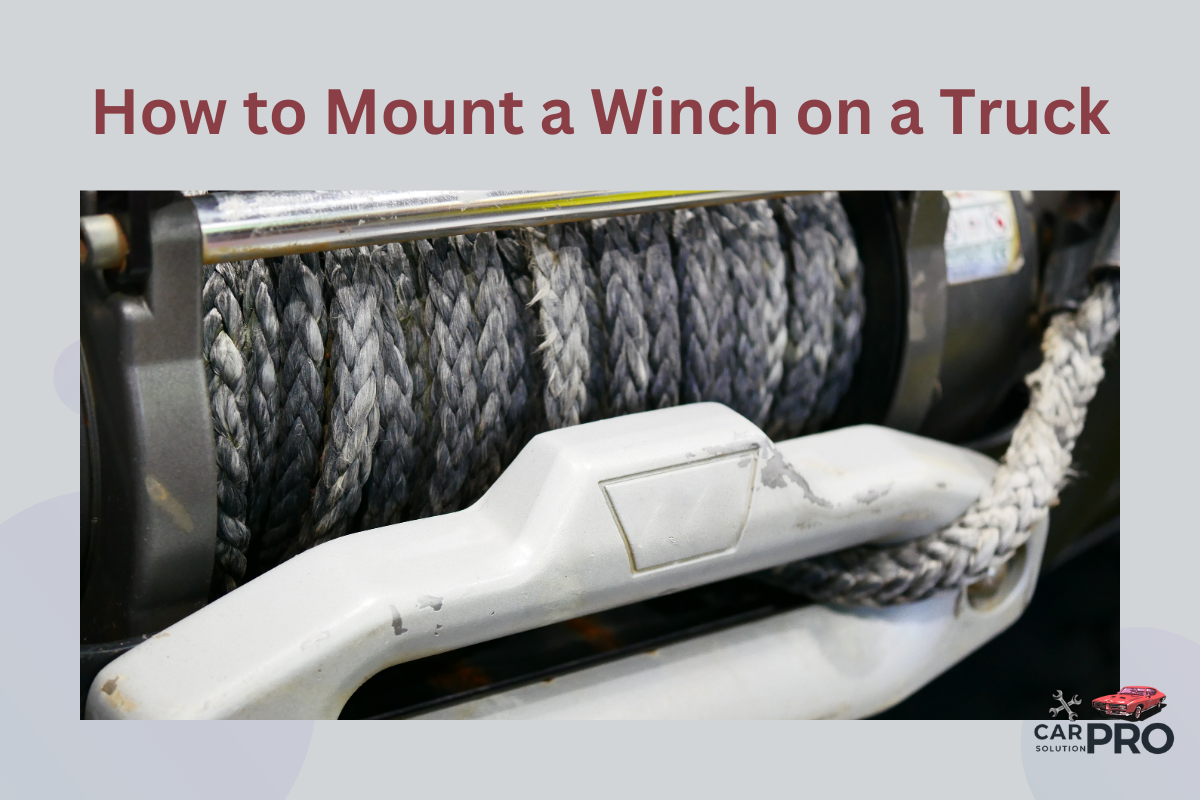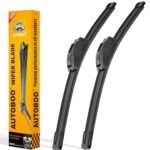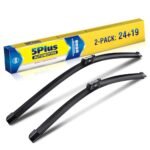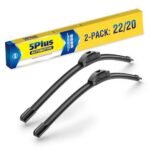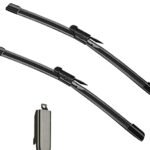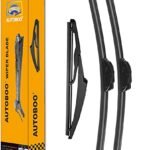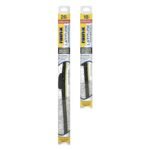Mounting a winch on your truck can turn it into a powerful rescue and recovery vehicle. It’s a useful addition for off-road enthusiasts and those who frequently haul heavy loads. A winch can be mounted on a truck’s front bumper, rear bumper, or in the truck bed, depending on your specific needs and truck model.
The process involves choosing the right winch, preparing the mounting location, and installing the necessary hardware. While it may seem complex, with the right tools and guidance, many truck owners can complete this project themselves.
Before starting, it’s crucial to consider your truck’s capabilities and the winch’s specifications. This ensures you select a winch that’s compatible with your vehicle and meets your intended use.
Key Takeaways
- Proper mounting location and winch selection are essential for safe and effective operation
- Installation requires careful planning, the right tools, and attention to electrical connections
- Regular maintenance and safety checks help ensure reliable winch performance when needed
Assessing Truck Winch Compatibility
Choosing the right winch for your truck involves careful evaluation of your vehicle’s specifications and the winch’s capabilities. These factors ensure a safe and effective winch installation.
Evaluating Truck Specifications
Start by checking your truck’s gross vehicle weight rating (GVWR). This rating determines the maximum weight your truck can safely handle, including passengers, cargo, and accessories.
Next, examine your truck’s front bumper or frame. Look for existing mounting points or a winch-ready design. Some trucks may need a custom mounting plate for proper winch installation.
Consider your truck’s electrical system capacity. Winches require significant power, so ensure your alternator and battery can handle the additional load.
Measure the available space for winch mounting. Take note of the dimensions to help select a winch that fits properly.
Choosing the Right Winch
Select a winch with a pulling capacity of at least 1.5 times your truck’s GVWR. This ensures adequate power for most recovery situations.
Consider the winch’s line type: steel cable or synthetic rope. Steel is durable but heavier, while synthetic rope is lighter and safer to handle.
Evaluate the winch’s motor type. Electric motors are common and easy to use, while hydraulic motors offer more power but require complex installation.
Check the winch’s duty cycle, which indicates how long it can operate continuously. A higher duty cycle is better for frequent or extended use.
Look for features like wireless remote control, waterproof design, and automatic braking for added convenience and safety.
Gathering Necessary Tools and Materials
To mount a winch on a truck, you’ll need the right tools and materials. A drill and wrenches are essential for making mounting holes and tightening bolts.
Here’s a list of key items to gather:
- Winch
- Mounting plate
- High-grade bolts
- Socket set
- Drill and drill bits
- Wire cutters
- Electrical tape
- Safety glasses
It’s important to have all items ready before starting the installation process. This ensures a smooth and efficient setup.
The winch itself comes with several components:
- Cable wire or rope
- Drum
- Motor
The cable length can vary from 9 to 36 meters. The drum keeps the wire neatly wrapped, while the motor powers the winch.
Before beginning, clear the truck bed of any items that might interfere with the mounting process. This preparation step is crucial for a successful installation.
Installing the Winch Mounting Plate
A sturdy mounting plate is crucial for safe winch operation. Proper installation ensures the winch can handle heavy loads without damaging your truck.
Securing the Mounting Plate
Start by choosing a mounting plate that fits your truck and winch. The plate must be strong enough to handle the winch’s pulling power.
Find the best spot for the plate, usually on the front bumper. Mark where you’ll drill holes. Use a drill bit made for metal to make the holes.
Clean the area and apply rust-proof paint to the new holes. This stops rust from forming. Place the mounting plate in position. Use high-grade bolts to attach it firmly to the truck.
Double-check that all bolts are tight. The plate shouldn’t move at all when you push or pull on it.
Aligning the Winch
With the plate secure, it’s time to place the winch. Line up the winch with the holes on the mounting plate. Make sure it’s centered and straight.
Insert bolts through the winch base and mounting plate holes. Don’t tighten them fully yet. This allows for small adjustments.
Check that the winch drum is level. Use a spirit level to confirm. If it’s not level, use small spacers to adjust.
Once aligned, tighten all bolts to the correct torque. Refer to your winch manual for exact specifications. Over-tightening can damage the winch or plate.
Electrical Setup and Testing
Proper wiring and power connection are crucial for a winch to function safely and effectively. Testing the setup ensures everything works as intended before use.
Wiring the Winch
Start by connecting the control switch to the solenoid. This allows you to operate the winch. Run the wires from the solenoid to the winch motor, keeping them away from moving parts and heat sources.
Use high-quality, marine-grade wire rated for the amperage of your winch. Secure all connections with heat-shrink tubing to prevent corrosion.
Install a circuit breaker or fuse near the battery. This protects the electrical system from overload.
Label all wires clearly for easy identification during future maintenance or troubleshooting.
Connecting to the Power Source
Connect the winch to the truck’s battery. Use the positive (red) and negative (black) leads provided with the winch kit.
Run the positive wire from the winch to the positive battery terminal. Connect the negative wire to a solid ground point on the truck’s frame.
Ensure all connections are tight and corrosion-free. Use dielectric grease on terminals to prevent moisture ingress.
After wiring, perform a no-load test. Activate the winch to check if it winds and unwinds smoothly. Listen for unusual noises and watch for jerky movements.
Finally, do a light pull test to verify the winch operates correctly under minimal load.
Safety Precautions and Maintenance
Proper safety practices and regular maintenance are crucial for safe winch operation. These steps help prevent accidents and keep your winch in good working condition.
Routine Inspections
Check your winch before each use. Look for frayed or kinked cables. Replace damaged cables right away. Inspect the mounting bolts and tighten them if needed.
Clean the winch after use, especially if it was exposed to mud or saltwater. Use a mild soap and water solution. Dry it thoroughly to prevent rust.
Lubricate moving parts regularly. Apply grease to gears and bearings. Use a light oil on the cable to protect it from corrosion.
Check the winch motor and battery connections. Clean off any corrosion and ensure all connections are tight.
Proper Winch Operation
Always wear thick gloves when handling the winch cable. This protects your hands from cuts and burns.
Never wrap the winch cable around your hands or body. Stand clear of the cable during operation to avoid injury if it breaks.
Use a cable damper or heavy blanket over the cable when winching. This reduces the risk of injury if the cable snaps.
Don’t overload the winch. Know its rated capacity and stay within those limits. Use a snatch block to double the pulling power for heavy loads.
Let the winch motor cool down between pulls. This prevents overheating and extends the life of the motor.
Frequently Asked Questions
Installing a winch on a truck involves several key steps and considerations. Proper mounting, wiring, and placement are crucial for safe and effective winch operation.
What are the necessary steps to install a winch on the front of a truck?
To install a winch on the front of a truck, start by choosing a suitable mounting plate. Attach the plate to the truck’s frame using bolts and washers. Place the winch on the plate and secure it firmly.
Connect the winch’s power cables to the truck’s battery, ensuring proper insulation. Install the control box in an accessible location and route the cables safely.
Can you mount a winch on a truck without a dedicated bull bar?
Yes, a winch can be mounted on a truck without a bull bar. A winch mounting plate can be attached directly to the truck’s frame or bumper.
This method requires careful planning to ensure the winch is securely fastened and doesn’t interfere with other components.
What are the various methods to securely attach a winch to a vehicle?
Winches can be attached using several methods. The most common is a winch mounting plate bolted to the vehicle’s frame.
Some trucks have built-in winch mounts. Aftermarket bumpers often include winch mounts. Custom fabrication is another option for unique setups.
What should you consider when wiring a 12V winch to a truck?
When wiring a 12V winch, use thick gauge cables to handle the high current draw. Route cables away from heat sources and moving parts.
Install a circuit breaker near the battery for safety. Ensure all connections are tight and protected from moisture and debris.
How to fit a winch onto a truck bed for optimal utility?
To fit a winch in a truck bed, install a mounting plate on the bed floor or against the cab. Secure the plate to the truck’s frame for added strength.
Position the winch for easy access and cable management. Consider a roller fairlead to guide the cable and protect it from wear.
Is it a complex process to self-install a winch, and what tools are needed?
Self-installing a winch is moderately complex. It requires basic mechanical skills and tools like wrenches, sockets, and a drill.
Essential tools include a torque wrench, wire cutters, and crimping tools for electrical connections. Following the manufacturer’s instructions carefully is crucial for a safe installation.
When you purchase a product through Amazon links on carsolutionpro.com, we may earn a small commission at no extra cost to you. This helps support the site and keep our content free. As an Amazon Associate, we earn from qualifying purchases made through our links.
